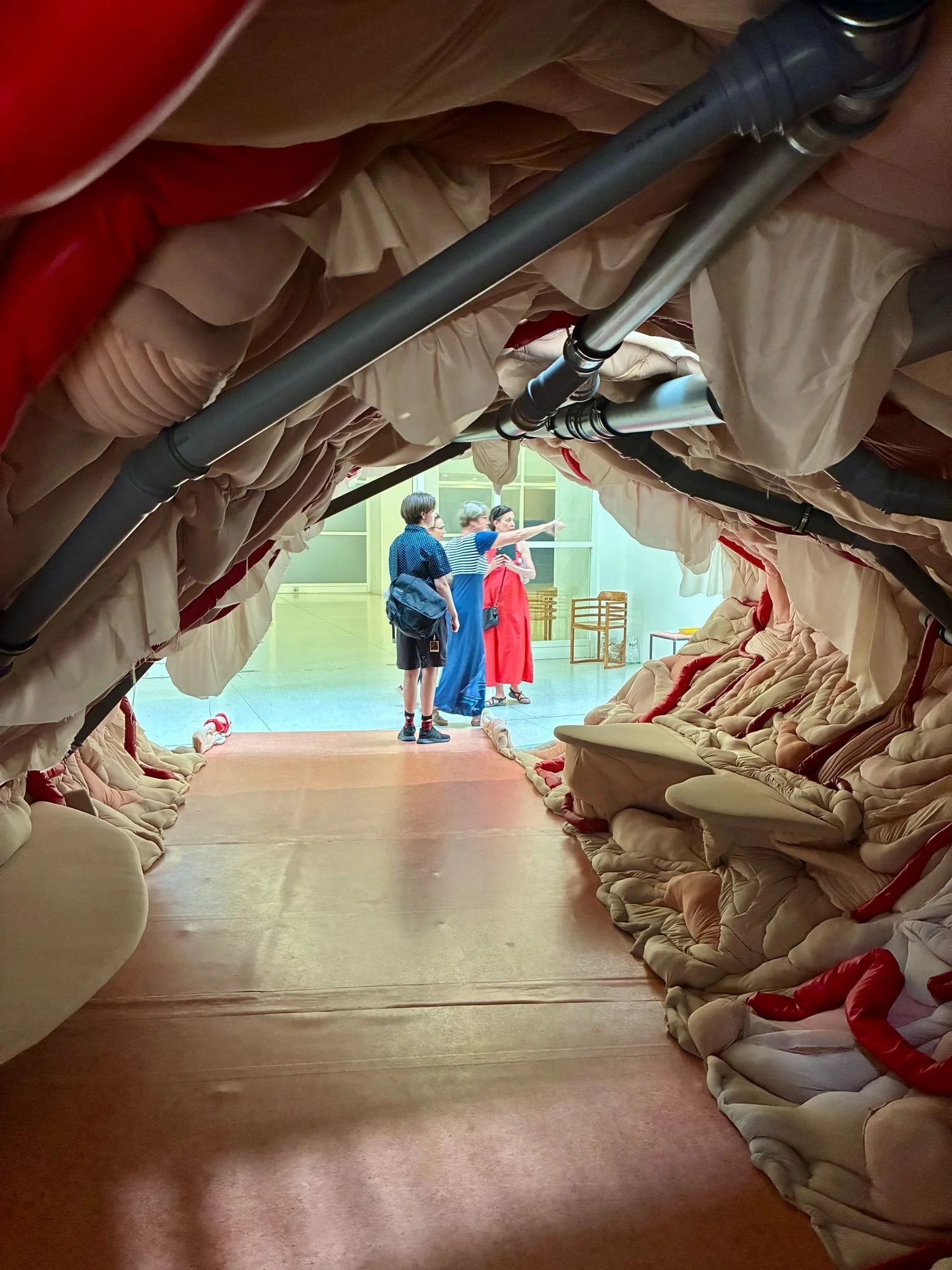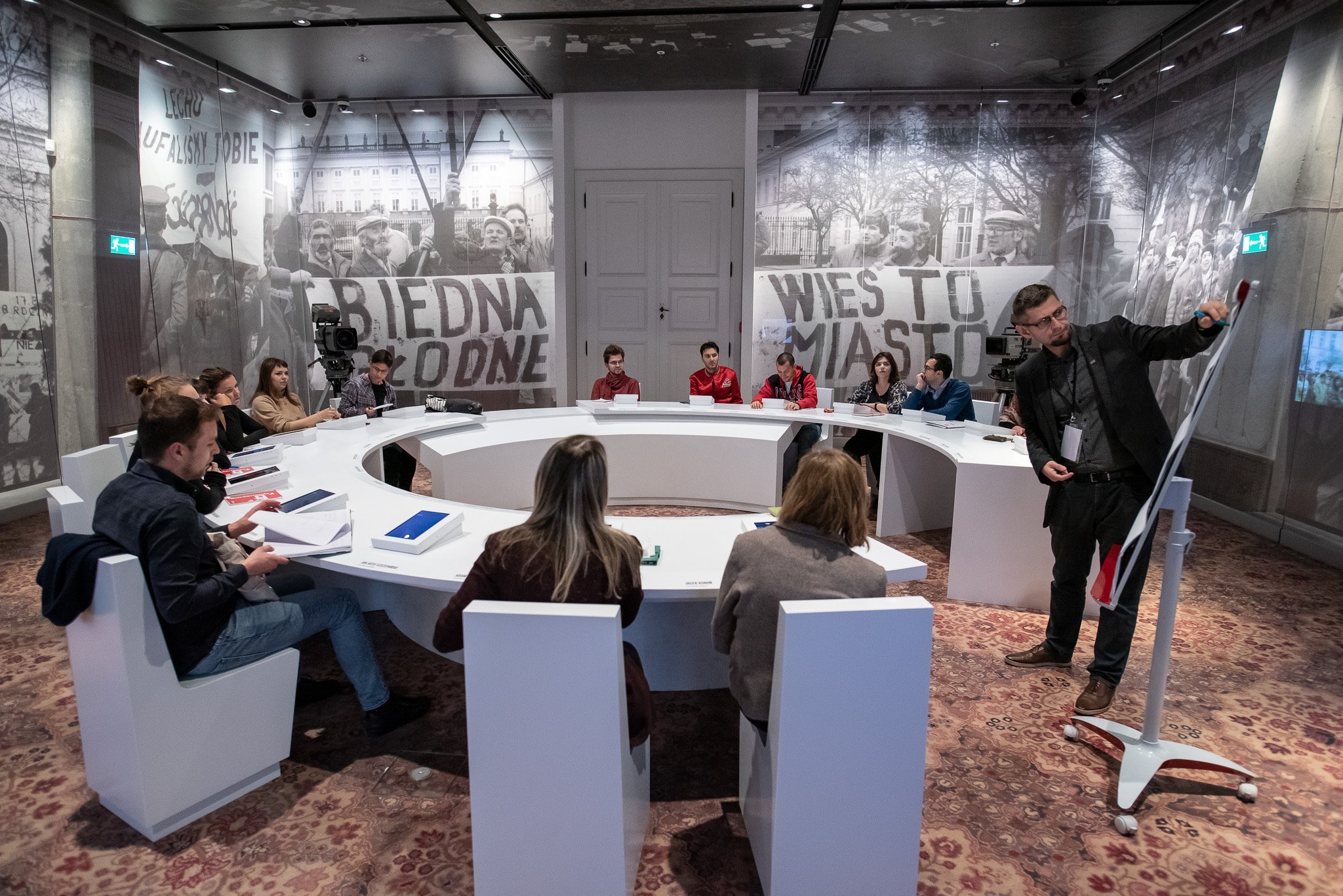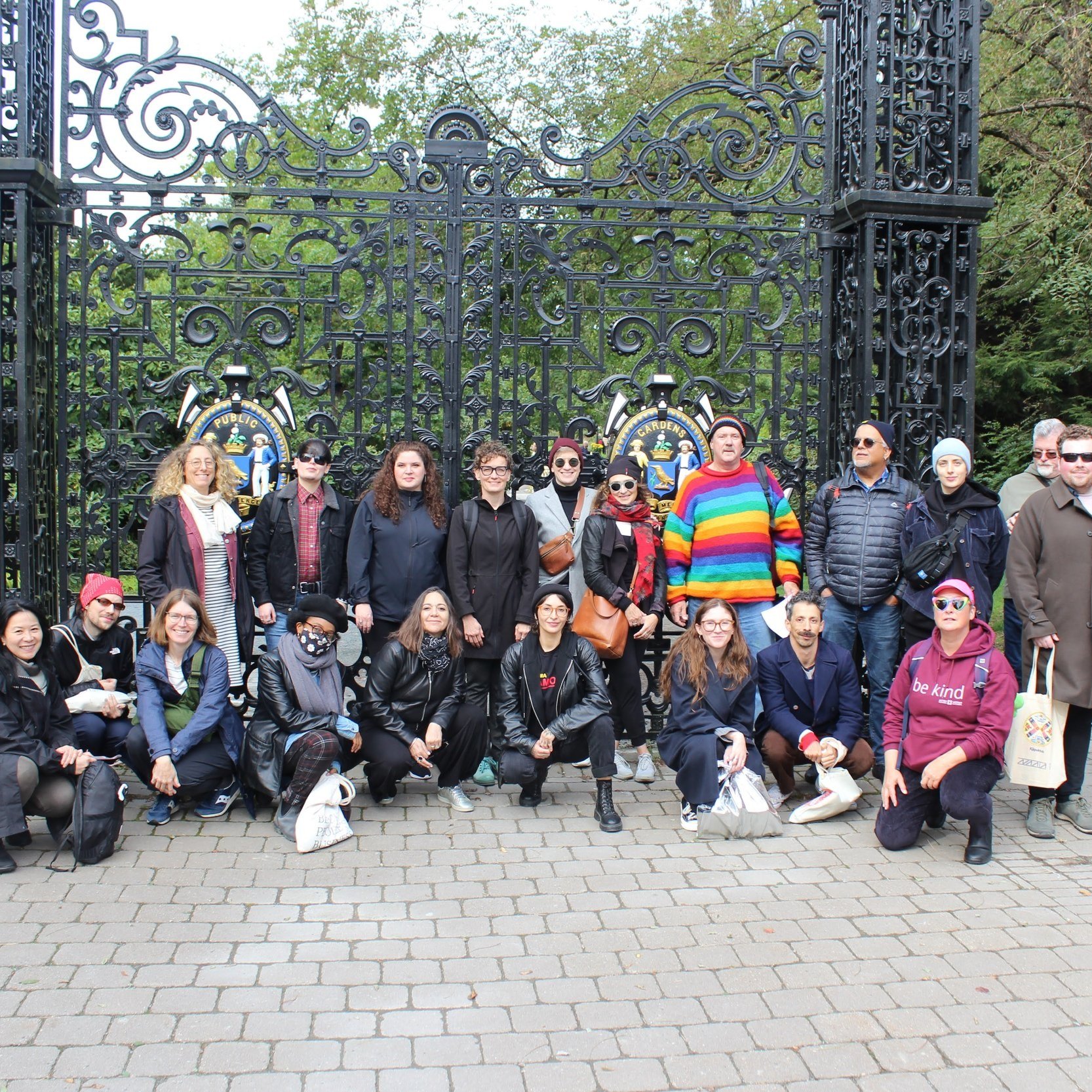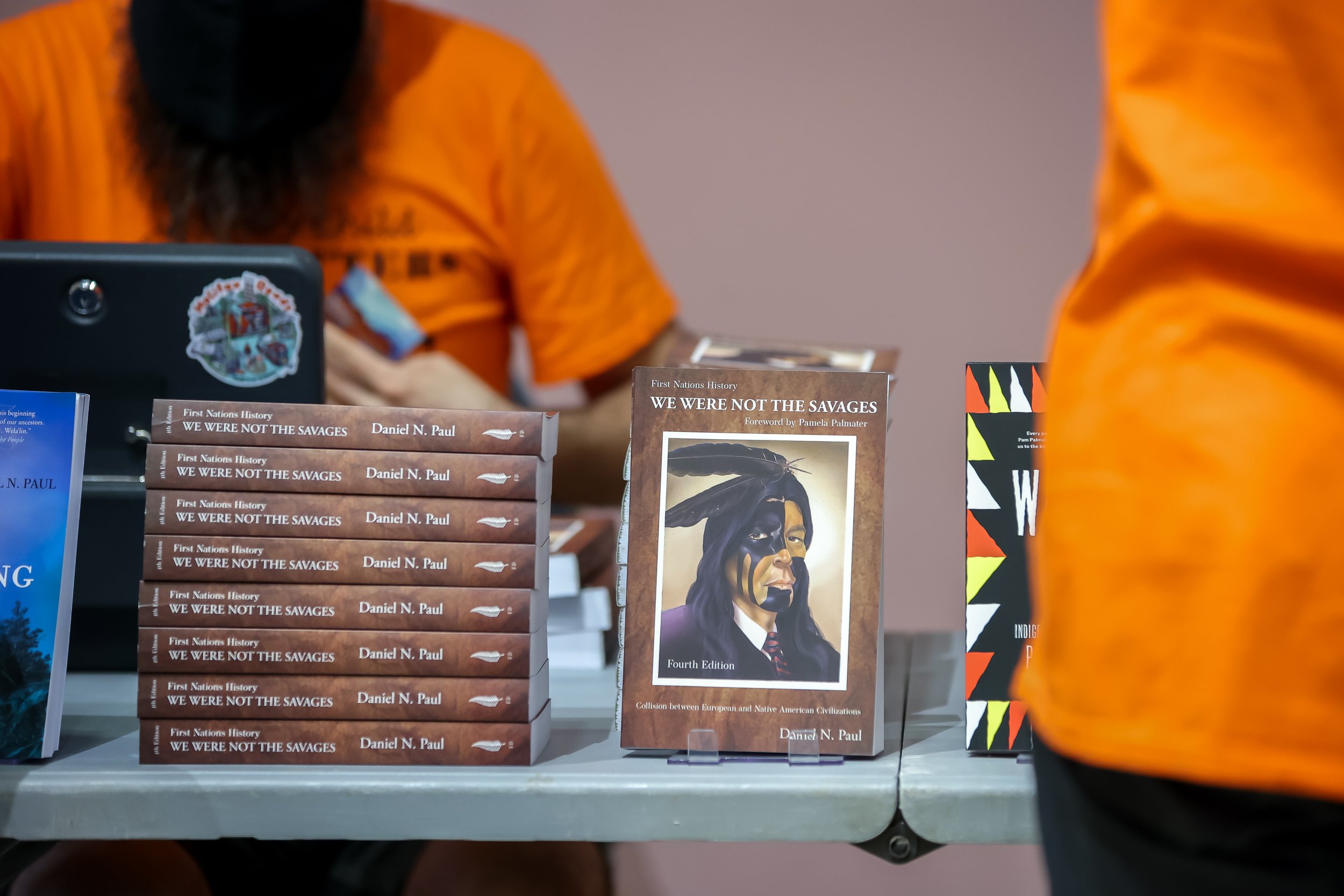TTTM’s 2023 Annual Gathering: Kjipuktuk / Halifax
Organized by the Unsettling and Indigenizing Cluster (UIM), TTTM’s 2023 Annual Gathering took place in Kjipuktuk / Halifax, Nova Scotia between October 13th -17th. The first day intersected with the last day of the Native American Arts Studies Association’s 24th biennial conference (October 11-13), which was co-organized by UIM cluster coordinators Dr. Heather Igloliorte and Dr. Carla Taunton with vital assistance from Karina Roman Justo (TTTM RA) and Danielle Miles (Program Coordinator, Inuit Futures). The following days involved TTTM participation in the Nocturne: Art at Night festival, city tours, local museum visits, TTTM cluster-led conversations/panels, and a public book launch for Museum Queeries’ contribution to the Exhibiting Theory book series.
Below is a short text and photo essay created by TTTM’s Emerging Scholars and Practitioners Committee (ESPC) Representatives, Rebecca Friend and Karina Roman Justo, reflecting on their experiences:
“Museums as Active Arenas: Some Thoughts from the 2023 TTTM Annual Gathering” by Rebecca Friend
“Photo Essay: LGTBQ2S+ Kjipuktuk Walking Tour” by Karina Roman Justo
Museums as Active Arenas: Some Thoughts from the 2023 TTTM Annual Gathering
BY REBECCA FRIEND (ESPC Representative, RA - Children’s Museology Cluster)
Panel presentation during the first day of the TTTM Annual Meeting which coincided with the last day of the NAASA conference
Between October 13-17, Thinking Through the Museum team members gathered in Kjipuktuk (Halifax) to update each other on the projects they have been working on over the past year. This gathering process involved not only formal panel presentations elucidating current happenings within each cluster, but a series of workshops, site-visits, and artist talks as well. From these conversations came reflections on the work that needs to be done to activate museum spaces and the ways in which these activations have intergenerational potentials.
Our first day of the TTTM Annual Meeting coincided with the last day of the Native American Arts Studies Association’s conference. Spirits were high as participants joined together in sessions on decolonial approaches to museology. What struck me the most from these conversations was the emphasis on needing to ensure that museum practices de-prioritize static descriptions. This was particularly relevant in discussions related to cataloguing museum collections - presenters from the Mi’kmawey Debert Cultural Centre explained how capturing the action or the verb related to actually using the object in artefact records, rather than prioritising noun-based descriptions, is necessary in order to keep the objects alive.
Shot from Sameer Farooq: The Fairest Order in the World on exhibition at the Dalhousie Art Gallery
Action and activation was also a focus in conversations around intergenerational approaches to renewing museum spaces. From children being invited to enter Sherry Farrell Racette and Cathy Mattes co-curated exhibition Kwaata-nihtaawakihk: A Hard Birth first to formally activate the space, to Nadia Jackinsky-Sethi of The CIRI Foundation commenting on how Indigenous sovereignty in museum spaces includes the act of bringing young people into museum spaces where they are typically not welcomed, like collections facilities, these approaches demonstrate that active approaches to renewing museum spaces ought to include dialogic exchanges between generations.
These themes continued to resonate with me throughout the week as we toured exhibitions like Sameer Farooq: The Fairest Order in the World, curated by Mona Filip at the Dalhousie Art Gallery, and visited sites like the Africville Museum. During our panel presentations, the Critical Race Museology Cluster contributed to discussions that explored the concept of radical relationality, where connections between objects and current events, objects and visitors, museums and their communities (and more) are all understood as part of an active, if unpredictable, relational process. The Children’s Museology Cluster underscored how invitations to young people to participate in museum spaces, even ones theoretically designed for them like storybook museums, are few and far between, but that there are radical potentials that can come from inviting young people into an active curatorial practice.
TTTM members on a guided tour of the Africville Museum
The National Heritage and Traumatic Memory Cluster’s panel presentation offered a glimpse into some of the challenges facing museums who attempt to remain in active conversation not only with “their communities”, but to forge dialogues across social groups around shared themes of traumatic memory. NHTM shared some of the successes and tribulations resulting from their groundbreaking attempt to bring the United States Holocaust Memorial Museum and the National Museum of the American Indian into conversation this spring.
Beyond providing opportunities to reconnect with familiar team members and get to know new project participants, the 2023 Annual Meeting offered a valuable space to reconsider common museum practice - both from the vantage point of panel presentations and in more collaborative, site-specific workshops. From these endeavours came the reminder that museums need to stay active, whether that involves changing terminology in collection catalogues, more meaningfully involving visitors both young and old in museum practice, or revisiting old sites through new lenses, these lessons learned will prove invaluable moving forward into the next year of the TTTM project.
Photo Essay: LGTBQ2S+ Kjipuktuk Walking Tour
BY KARINA ROMAN JUSTO (ESPC Representative, RA - Unsettling and Indigenizing Museology Cluster)
Led by Daniel MacKay, TTTM members picked up as many current and historical elements of Kjipuktuk/Halifax’s Queer history as they could in a two-hour walk through downtown and up to the university/hospital district. They talked about places for meeting, cruising, activism, community building, and art.



























